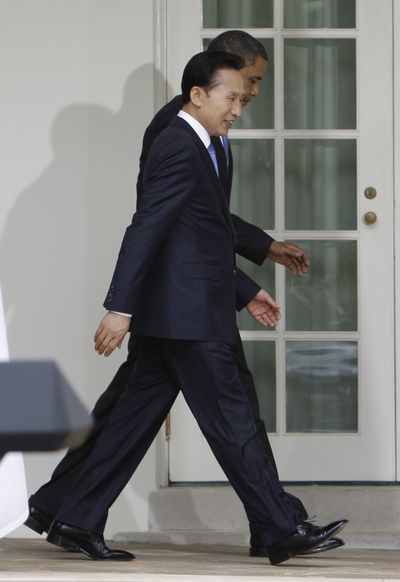N. Korean missiles not immediate threat
General: West Coast out of range for three to five years

WASHINGTON – North Korea’s missiles may be capable of hitting West Coast cities within three years, a top Pentagon official warned Tuesday, but are unlikely to be able to deliver a nuclear warhead in that that time frame.
The U.S. assessment came as North Korea’s rulers show signs of preparing for additional weapons tests in the face of international condemnation and new United Nations sanctions.
The estimate of three to five years, given in congressional testimony by Marine Gen. James Cartwright, the vice chairman of the Joint Chiefs of Staff, is somewhat longer than horizons estimated previously by the U.S. military.
It follows North Korea’s most recent weapons tests, including a nuclear detonation last month and a multi-stage missile launch in April that indicated progress but also highlighted flaws in the country’s current missile technology.
At the White House, President Barack Obama met Tuesday with South Korea’s president, saying he would end the cycle in which Pyongyang provokes international crises in return for aid.
North Korea in the past has promised to curtail its nuclear program in favor of energy and economic aid. “This is a pattern they’ve come to expect,” Obama said. “We are going to break that pattern.”
Cartwright outlined the potential threat posed by North Korean missiles in testimony before the Senate Armed Services Committee. Pyongyang’s Taepodong 2 missile is designed to reach the U.S. West Coast, but test launches to date have represented partial failures.
Analysts believe the Taepodong 2 is inaccurate, and so far has failed to reach a third stage, a critical leap to be able to hit the U.S.
Cartwright, who previously oversaw America’s nuclear forces as head of Strategic Command, said that in three to five years, Pyongyang may be able to overcome its technical problems.
But Cartwright said that horizon did not include the time needed to develop the actual warhead. He did not estimate how long it might take Pyongyang to develop a warhead small enough to put on a long-range missile.
Cartwright also stressed his assessment represented an estimate. “My crystal ball’s not going to be any better than anyone else’s,” he said.
Under questioning from Sen. Evan Bayh, D-Ind., of the Senate Armed Services Committee, Cartwright said he was “90 percent-plus” confident that the U.S. could shoot down a missile launched at the U.S. from North Korea.
Defense Secretary Robert Gates has proposed trimming the overall U.S. missile defense budget, but has requested $900 million to maintain and improve interceptor missiles now based in California and Alaska.